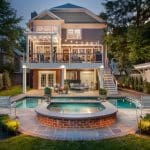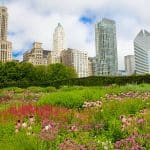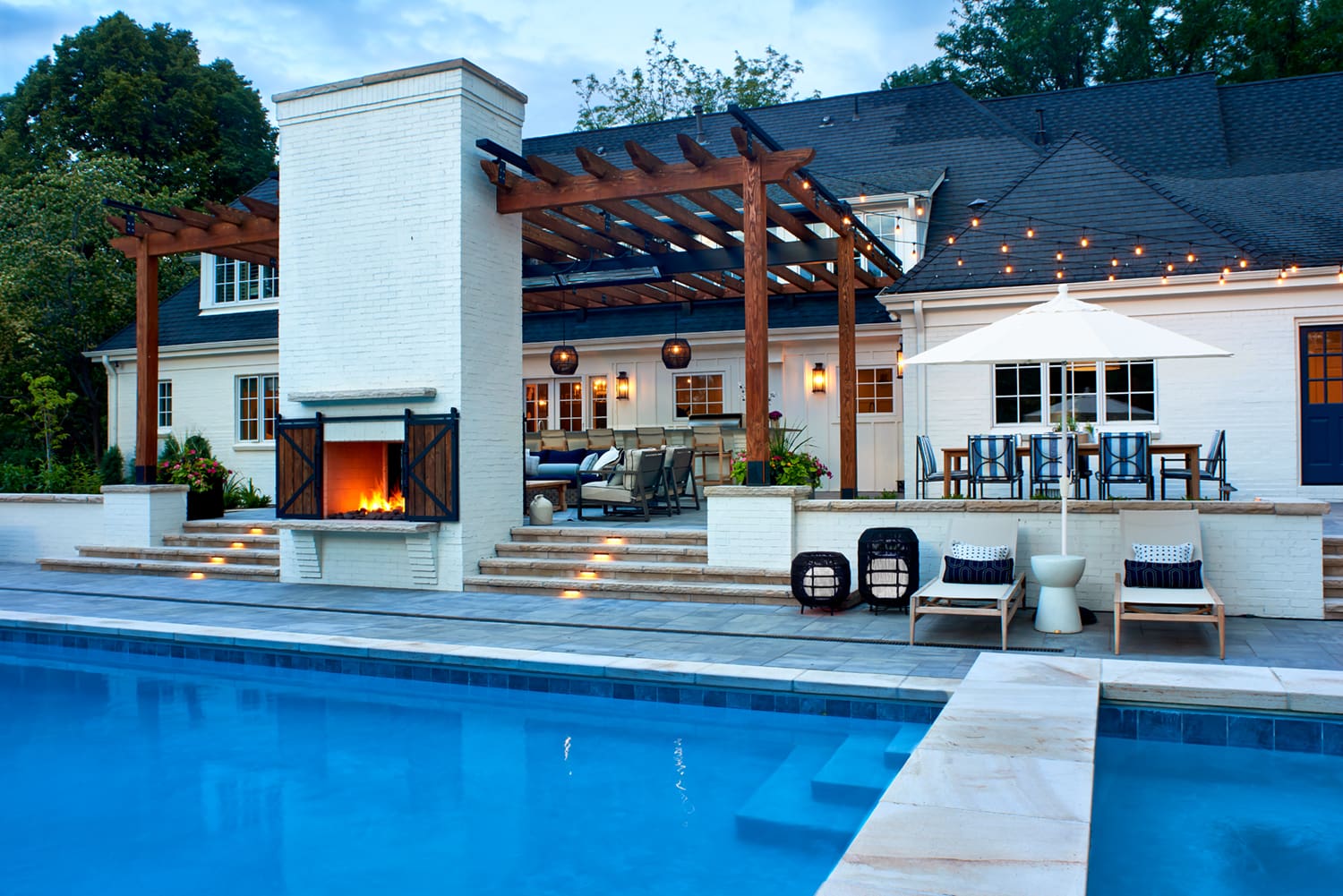
There’s a lot of uncertainty about what 2024 will bring with it being an election year, but landscape professionals are fairly sure these residential landscape trends will continue to go strong next year.
Outdoor Living Elements
Outdoor living spaces continue to be incredibly desirable to clients, but what elements make up an outdoor living space varies from person to person.
“We’re constantly just using the same materials and putting them together in a different way and creating new ideas,” says Chris di Stefano, president of di Stefano Landscaping, based in Essex Junction, Vermont. “I would say the trend has continued that people want to maximize their property and bring their living outside even now that is COVID over.”
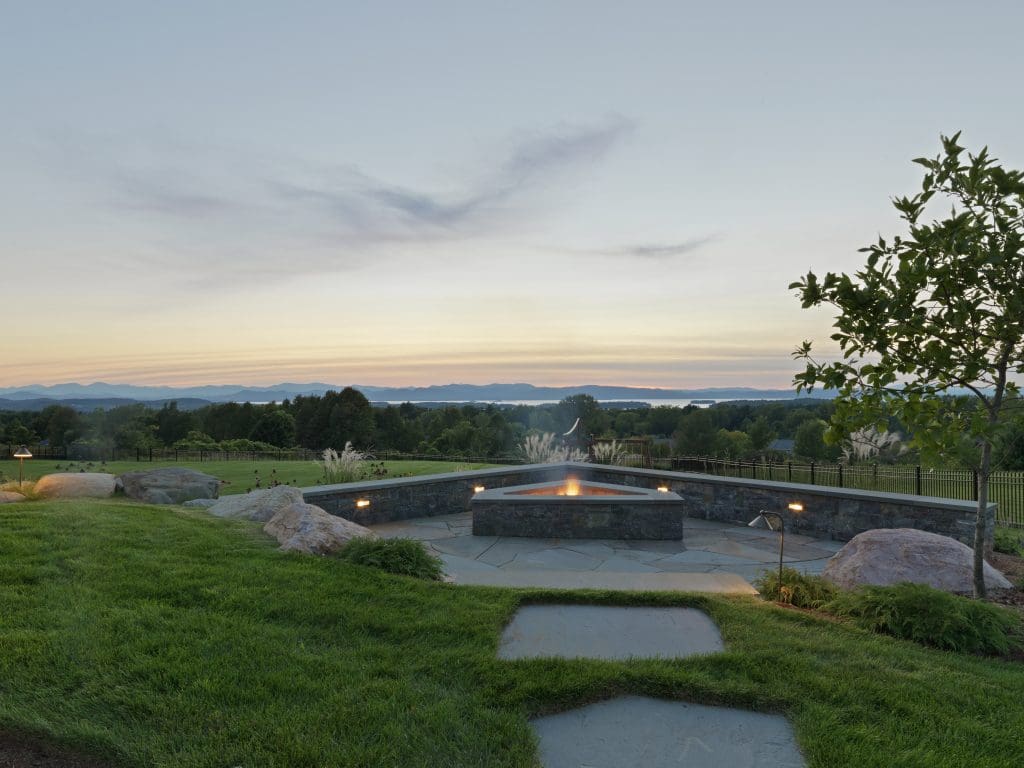
In di Stefano’s region, clients are seeking features like outdoor kitchens, pergolas, fire pits and gathering spaces beyond the traditional patio. He says while usually some of these items were saved for larger, more involved landscapes, even clients with smaller projects are asking about outdoor kitchens.
Bob Hursthouse, president of Hursthouse Landscape Architects, based in Bolingbrook, Illinois, says he’s seeing a continuation of living at home and customers revitalizing their environments. He says pool and spa combinations remain super popular. He says they are also having a lot of interest in outdoor kitchens and appliances like pizza ovens.
“We’re still contracting and designing lots of those outdoor living spaces, roofed structures,” Hursthouse says. “We’re getting tons of requests for things like that. They’re expensive, so they’re not being executed quite as quickly, but we’re getting tons of requests for them.”
Randy Hill, director of sales for David J. Frank Landscape Contracting, based in Germantown, Wisconsin, says outdoor living and gathering spaces continues to be most popular and they’ve seen an increased interest in spaces for vegetable gardens for their clients as well.
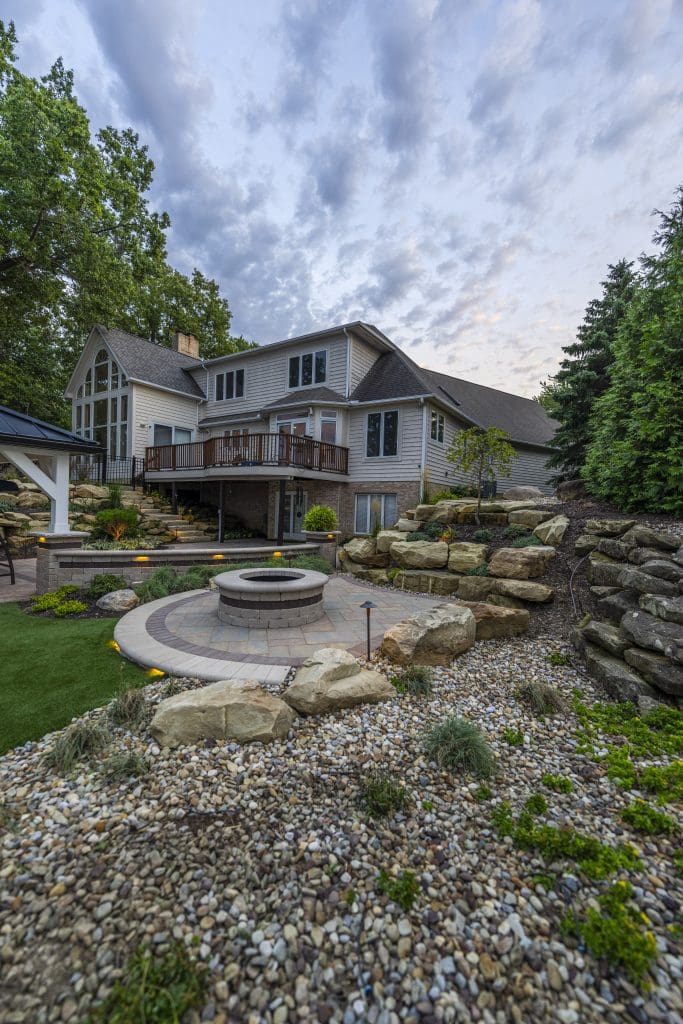
One trend Adam Hallauer, CEO & president of Designs By Sundown, based in Littleton, Colorado, is seeing is homeowners planning long-term for their landscapes to host events such as weddings, graduations or family reunions. He isn’t sure if this is driven by challenges presented by COVID to find event spaces or just a desire for more of a family feel for gatherings.
“They’re dedicating spaces that they won’t use but every once in a while, but they’re putting into plans now for those kinds of spaces,” Hallauer says.
Joe Stark, director of marketing for GW Capital, the parent company of Ground Works Land Design, based in Cleveland, Ohio, has noticed an interest in health and wellness features being added to the landscape, such as meditation areas or spaces to do yoga. He says they’ve even had a couple of requests to add cold plunge areas.
Greg Struhl, owner of Chip-N-Dale’s Custom Landscaping, Inc., based in Las Vegas, Nevada, says he’s had clients interested in installing healing gardens as well to help with stress and anxiety. He’s also had an uptick in requests to replace grass with synthetic turf as their local water authority has started to fine people for excessive use of water.
Claire Goldman, principal and head of design and business development for R&R Landscaping, based in Auburn, Alabama, says she’s seen more clients embrace synthetic turf in spaces like putting greens, areas too shady to grow sod or low-maintenance play spaces.
Renovating Aging Landscapes
Another trend some regions are seeing is a focus on renovating existing outdoor living spaces. In Struhl’s case, he says communities in the area are aging and he’s having to redo landscapes that were poorly installed 20 to 25 years ago.
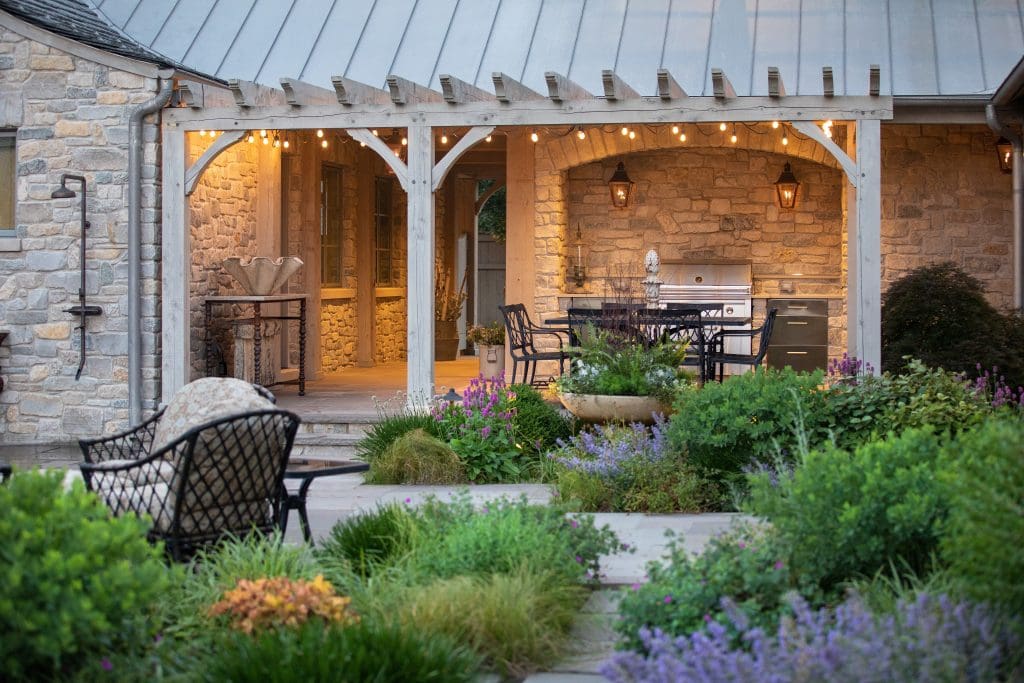
“There’s really no Band-Aid to it,” Struhl says. “They’re multi-million homes and they need a lot of a lot of work because when they were done initially, people didn’t get a professional. They just got somebody who could do it for a good price. Now they’re going to pay the price because that always costs more to redo things.”
Hursthouse says we are entering an interesting time as a number of landscapes constructed in the 80s are beginning to deteriorate.
“I think there’s a bit of a renaissance back to classic construction techniques,” Hursthouse says. “We do a lot of that, and our clients appreciate the longevity that our projects bring to them because of that.”
Hallauer adds that when the economy turns, more people stay put and decide to reinvest in their properties.
“I do anticipate this going back to more of a renovation market, updating their current spaces, making it more livable to their current lifestyle and needs,” Hallauer says.
Color Craze
While some design sites are claiming dark, moody plants will be all the rage next year, these landscape companies are getting the opposite request.
“If anything, our clients are always asking for more color, because they want more than just the green because of so much shade from the massive oak trees around here,” Stark says.
Hill says that plants with bold leaf colors, texture and large blooms are highly desired these days.
“I think there’s a lot of gravitation towards good perennial mixes, seasonal blooms and seasonal progressions,” Hursthouse says. “I have a lot of clients that like bright colors and bright textures so whether that’d be a flower or foliage or a fruit or all the above. I’m seeing clients requesting a lot of bright colors together.”
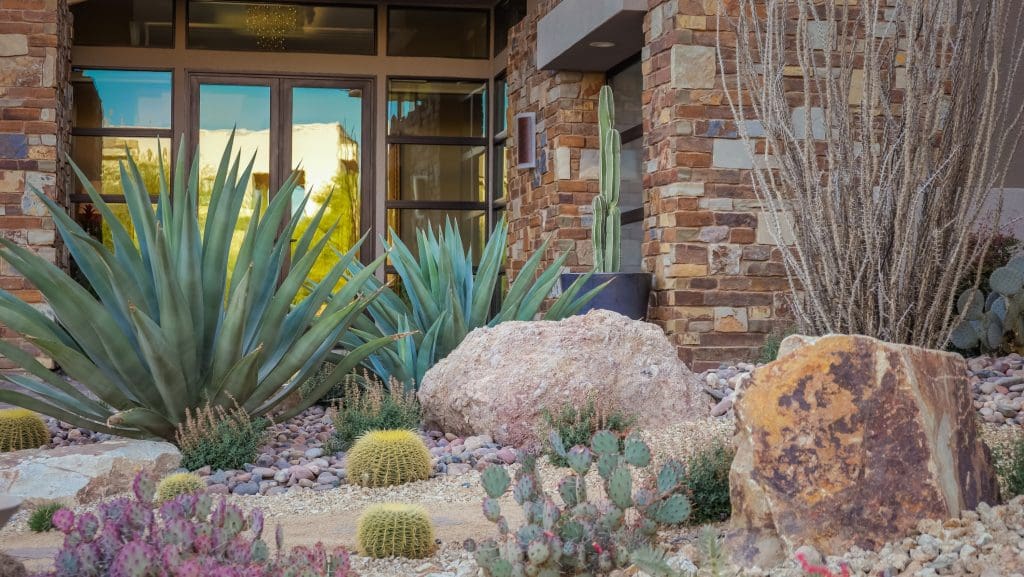
Goldman says people in their region have been painting their houses darker colors, so they opt to contrast the walls with lighter plant material that won’t get lost in the dark paint. Di Stefano says he sees bigger blocks of color and texture being popular.
“Even people that want a lot of variety, I think, are wanting to see that variety in maybe a more limited color scheme, and more limited texture scheme or using bigger blocks of plantings to achieve that rather than a lot of sort of more traditional kind of groupings of planting,” di Stefano says.
In the Southwest, Struhl says cooler colors like blue, silver and gray are quite popular in the area. He says rather than fighting Mother Nature, he selects plants that are more likely to thrive there, like their iceberg roses.
Preferred Plants
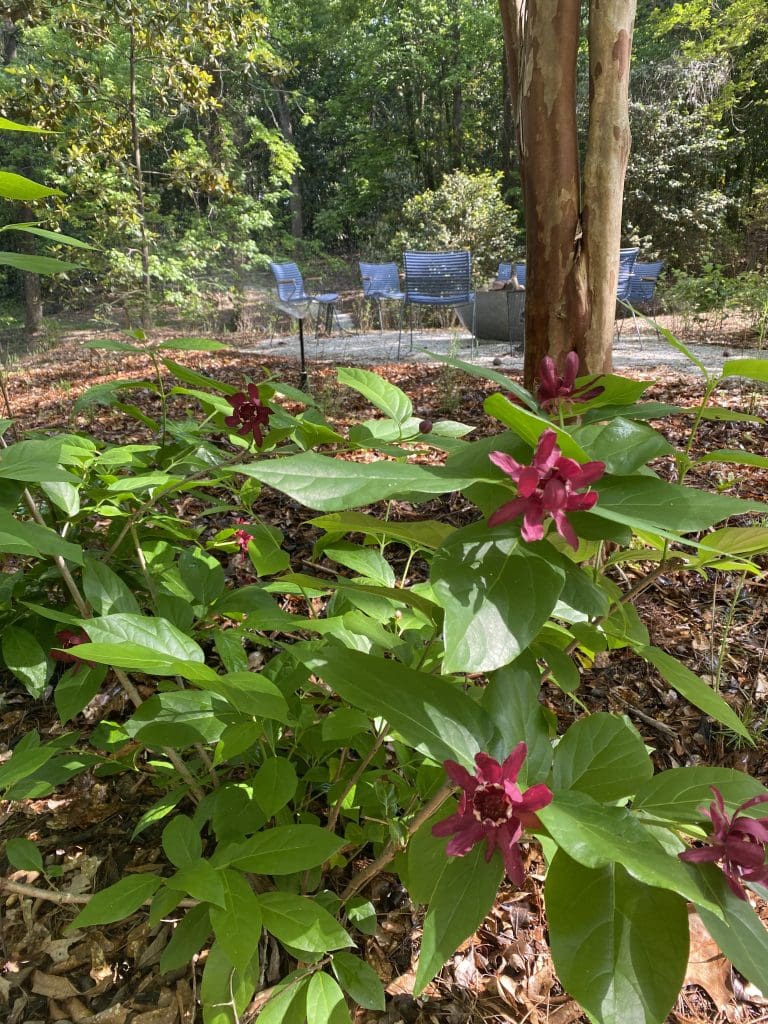
Hursthouse says he’s seeing a lot of pushback against hydrangeas where clients don’t want any iteration of the species in their landscape. Meanwhile, Hallauer’s customer base in Colorado is demanding hydrangeas and boxwoods despite the high warranty costs. The desire for low-maintenance plants remains strong with customers.
“Most clients are looking for plants that can be installed and left alone and thrive, so any plant that’s successful with neglect typically catches on quickly,” Goldman says. “We’ve had fun using the different textures of Distylium and knowing we don’t have to worry much about the warranty with that one.”
Hill agrees their clients are looking for plants that need little watering or pruning.
“They like color, texture, and blooms that require little work to get them to that point,” Hill says. “Clients who don’t have time to do yardwork want plants that stay small or are easily manageable with one pruning a year.”
Working with the Land
Stark expects to see more clients want to work with their existing landscape than start with a completely blank canvas.

“In the past, you may see us completely excavate and clear an entire backyard to make a project exactly what the person wants,” Stark says. “Some of the most recent projects we’ve done and some of the most beautiful, final projects that we’ve done are these gorgeous projects where we’re working with in the actual topography and environment. Instead of just clearing out a bunch of trees and making it a blank slate, we’re working within the existing backyard.”
Goldman says they’ve seen less demand in clear-cutting lots and working with the natural landscape as well.
“We’ve also seen properties wanting to start building ‘natural’ back in,” Goldman says. “That’s a fun challenge. There’s an art to building ‘natural’ that takes a special eye and expertise. Those have been my favorite projects.”


